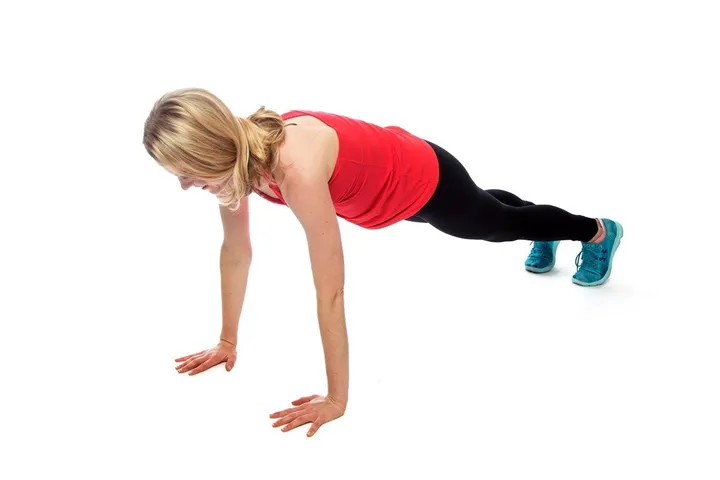Best exercises for women by age: What to focus on in your 30s, 40s and beyond

Women’s fitness often tends to focus on cardio, yoga or even conditioning, but any personal trainer will tell you, this isn’t enough.
Women tend to shy away from lifting weights, often due to myths. There is still a prevailing myth that women will get bulky if they strength-train and that you control your weight through cardio. Neglecting weight training is a big mistake. Strength training — in some iteration — should be considered non-negotiable for women at every age.
Strength training can help improve your posture, boost bone health and aid with fat loss, she adds.
Story continues below advertisement
Earlier this week, Trotter broke down the best exercises for men per age group, and this week she tackles exercise for women. While this may not be ideal for all women, experts say it creates a foundation base people can start with.
20s
Similar to men, women in their 20s should start by getting into an exercise routine — the earlier you create healthy habits, the more likely you will stick to them.
“Don’t just do cardio like spinning and running,” she continues. “Start building your muscle mass and bone density now so you are less likely to have osteoporosis, muscle loss, and other health concerns later in life.”
Exercise ideas: Start with a strength ranting program that includes multi-joint exercises like lunges, squats and push-ups. She also recommends focusing on the hips, glutes and inner knee muscle, the vastus medialis oblique (VMO).
“Women have a larger Q angle at the hip and are thus prone to knee and hip injuries,” she says. “Strengthening the VMO and the glutes will help prevent these injuries. Think single-leg hip hinge, side-leg lifts, clams and bridges.”
30s
In your 30s, shift to interval training and pelvic floor conditioning.
“Intervals are an efficient yet effective way to blast fat and increase fitness,” she explains. “You can get a great workout in 20 minutes.”
Exercise ideas: Start with HIIT (High-intensity interval training) interval class or do intervals on a cardio machine of your choice. “Try 15-second pick-ups. On any cardio machine, start with a five-minute warm-up, then alternate 15 seconds hard with 45 seconds moderate for 10 minutes. Recover for two minutes and repeat the intervals by alternating 15 seconds hard with 45 seconds at regular speed.”
She also recommends Tabata training, a popular form of HIIT. “One cycle of Tabata takes four minutes: you do eight sets of 20 seconds of intense work followed by 10 seconds of complete rest. After one four-minute Tabata set, rest for one minute and move on to your next exercise,” she says. A workout should include three to six Tabata sets plus warm-up and cool down. “Any exercise can be made into an interval from jumping jacks, high knees and burpees.”
It’s also beneficial in this age range to start thinking about engaging the pelvic floor and the deep core. “Contrary to popular belief, pelvic floor health is not just critical during pregnancy. Many women find themselves incontinent in their 50s and 60s because they did not start to train their pelvic floor early enough. Remember, it is always easier to keep up than to catch up.” Pilates is a good way to strengthen this area.
40s
In your 40s, variety should be a priority. “If you have been active for years and you are no longer seeing results, it could be in large part because you have to stop doing the same thing.”
She says if you’ve always taken Pilates, switch to yoga and if you’ve only done cardio workouts, try lifting weights.
Exercise ideas: Try cross training. “Don’t only do one sport or activity, especially if it is high impact. If you are a runner, a soccer player or a basketball player, try using the rower, elliptical or other low-impact forms of cardio,” she explains. “Make sure your routine is balanced.”
50s and beyond
In the age range of 50s or 60s, it’s about recovery.
“Exercise is only a positive stress on the body if the body is given enough time and tools to recover,” she says. “As you get older, your body needs more time to recover and better tools of recovery.”
This means stretching, sleeping, and giving yourself rest days in-between intense workouts. She also recommends adding a brain element to your workout — learn a new sport or try a new class.
Exercise ideas: Prioritize balance training. “Get good at standing on one leg, do strength exercises that involve standing on one leg [like a hip hinge], try balance fitness toys like the Bosu, or consider yoga moves that require balance.”
Originally published at GLOBALNEWS












